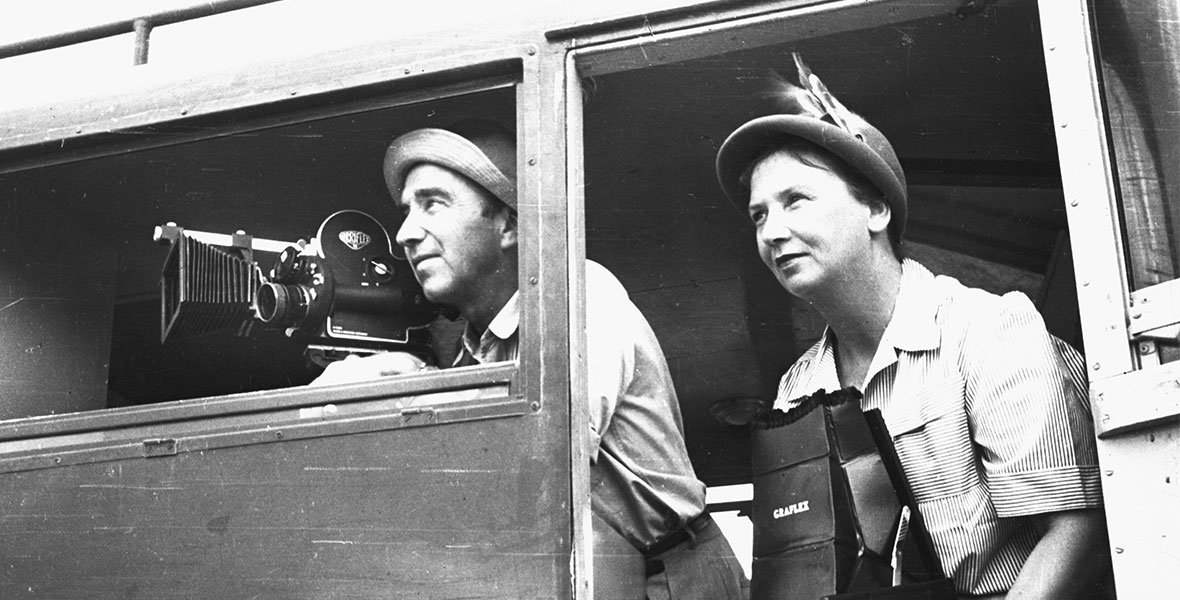In 1948, Walt Disney viewed a short wildlife film by Alfred and Elma Milotte. Inspired by what he saw, Walt contacted the couple and, without a specific project in mind, hired them to film on location in the Alaska wilderness. The result was the first of Disney’s celebrated True-Life Adventure films, Seal Island, which won an Academy Award®.
Al later recalled, “Walt was great. He said, ‘Just go out and get some good pictures.’ He never told us how to do it. He gave us independence.”
With the success of Seal Island, the Milottes continued to travel the globe for the True-Life Adventures series, which were released between 1948 and 1960, and the People and Places travelogue films, released from 1953 to 1960. During their Disney career, the Milottes’ films won a total of six Oscars®, including Beaver Valley, The Alaskan Eskimo, Bear Country, Nature’s Half Acre, and Water Birds.
Al Milotte was born in Appleton, Wisconsin, in 1905, and Elma was born in Seattle, Washington, in 1907. The couple met in Seattle and headed north to Ketchikan, Alaska, where they were married. There, they owned and operated a photography studio. They later broke into the lecture circuit, traveling the United States and showing films they produced about Alaska.
During World War II, the Milottes temporarily stopped producing wildlife pictures, while Al made instructional films for North American Aviation. After the war ended, they resumed filming scenes of Alaska.
About this same time, Walt had taken an interest in the nation’s last frontier, Alaska, and had even traveled there. He contacted a wildlife magazine editor who suggested he see the Milottes’ work, which he did. Walt was particularly enamored by the couple’s humorous sequence of bears scratching themselves.
For the next decade, Walt kept the couple busy crisscrossing the globe. Among their stops were Florida, where they filmed Prowlers of the Everglades; Australia, where they photographed Nature’s Strangest Creatures; and Africa, where they lived for three years while filming The African Lion.
Elma had a theory about their unique relationship with wildlife. She once said, “I think the animals know we aren’t predators. When hunters come into an area, the animals stay away for days.”
The Milottes’ work also appeared on television, in segments of the Mickey Mouse Club, and in a personal story called “Cameras in Africa,” featuring an introduction by Walt Disney.
In 1959, Al and Elma retired to Sumner, Washington, where they wrote three books: The Story of the Platypus, The Story of the Hippopotamus, and The Story of an Alaskan Grizzly Bear. They also filmed a seagull sequence for Alfred Hitchcock’s The Birds.
Elma Milotte passed away on April 19, 1989, and Al Milotte followed her five days later.



